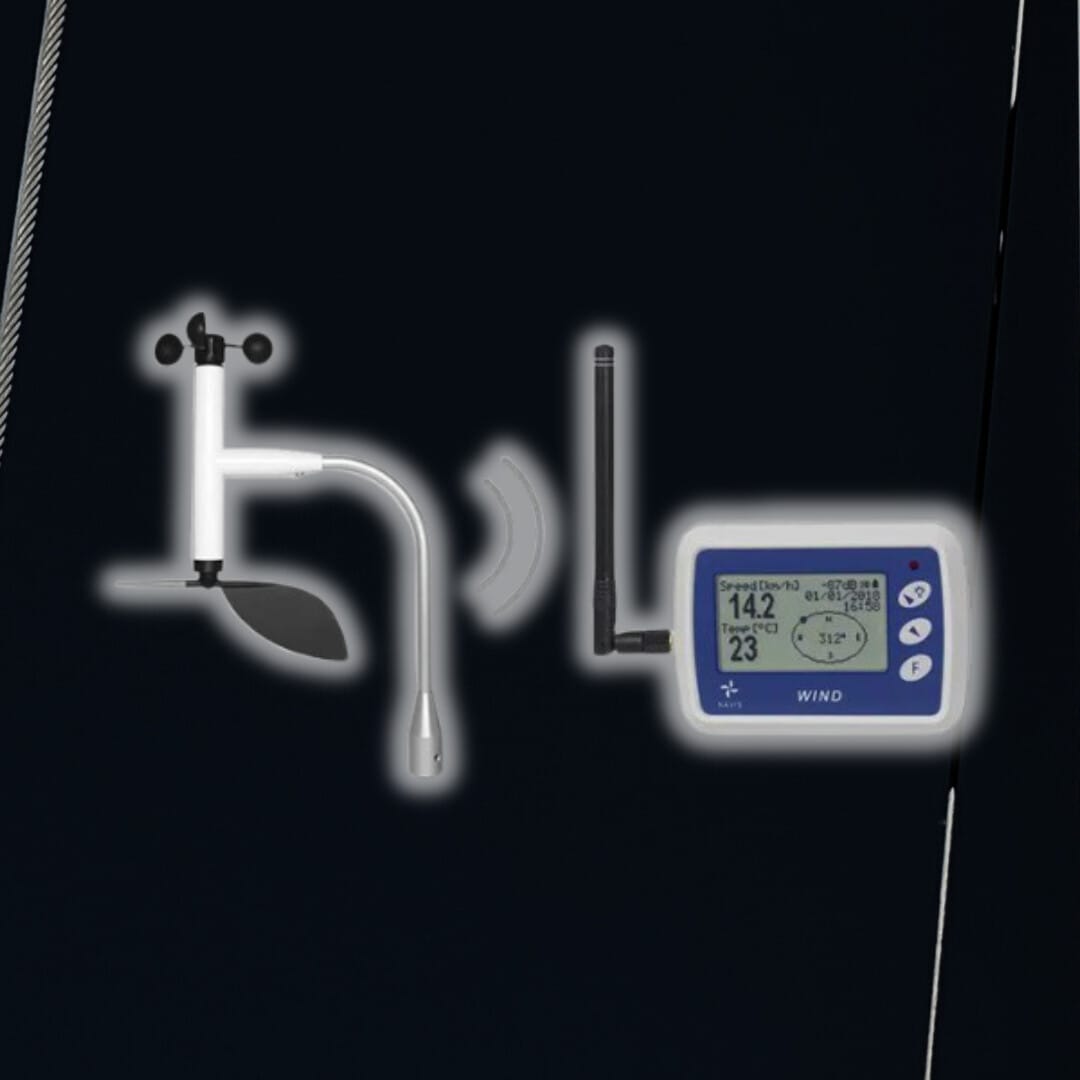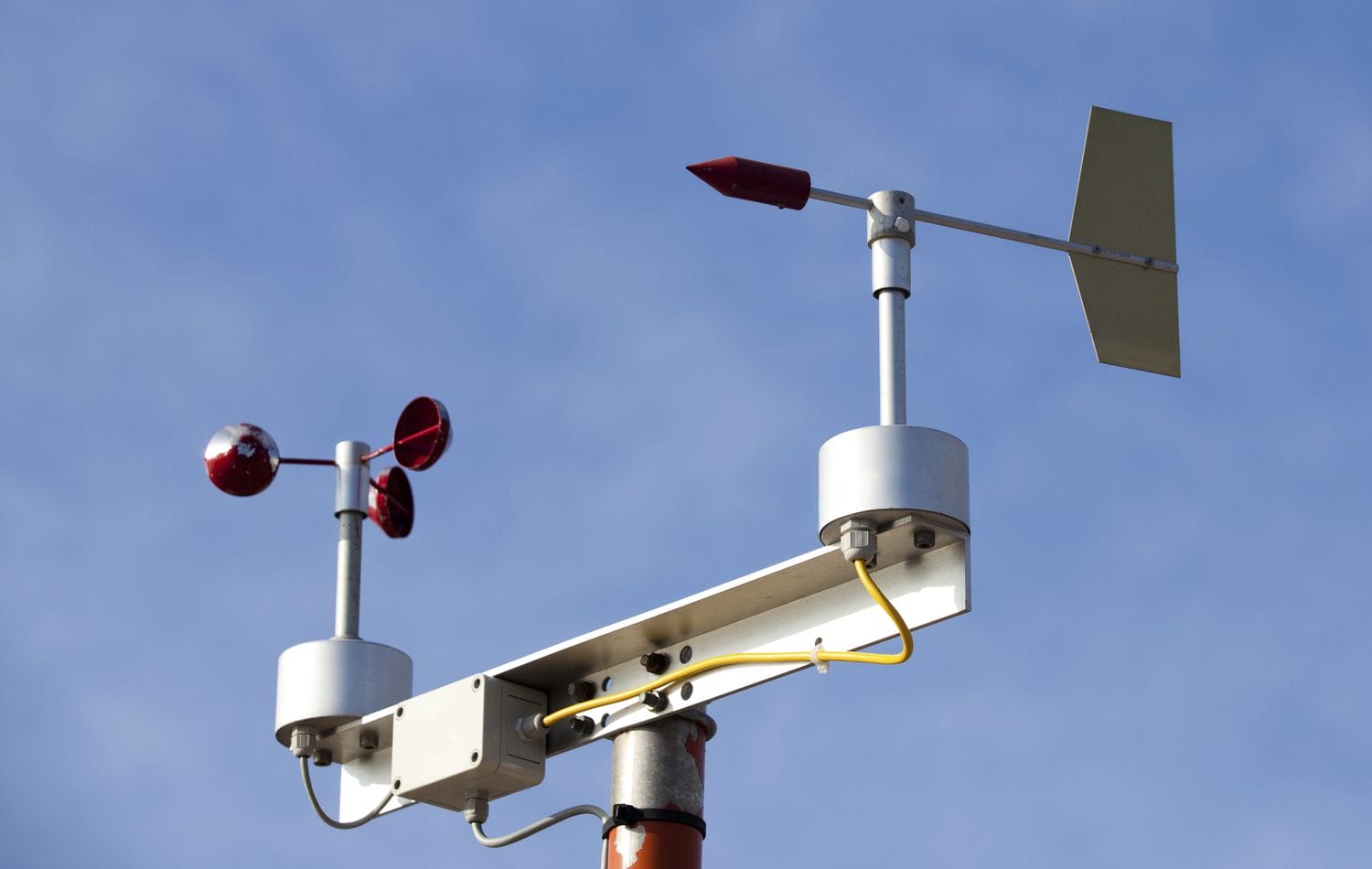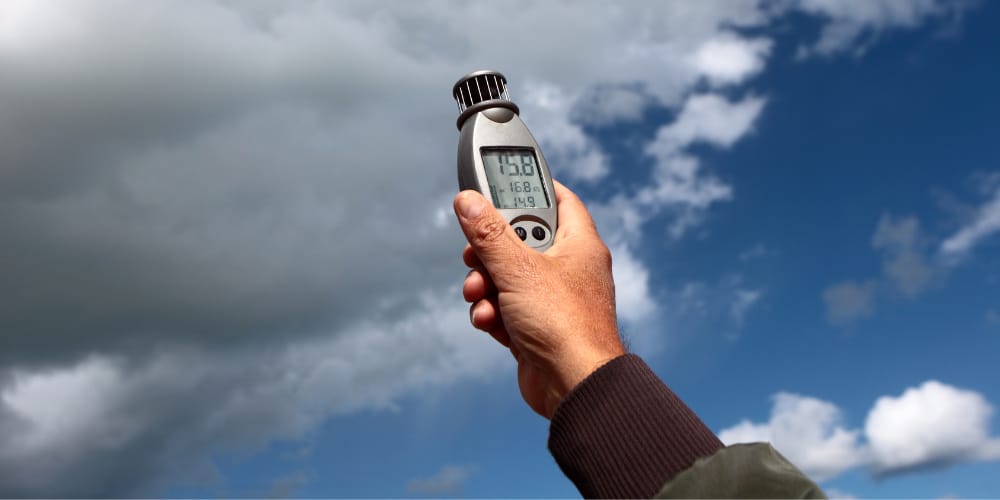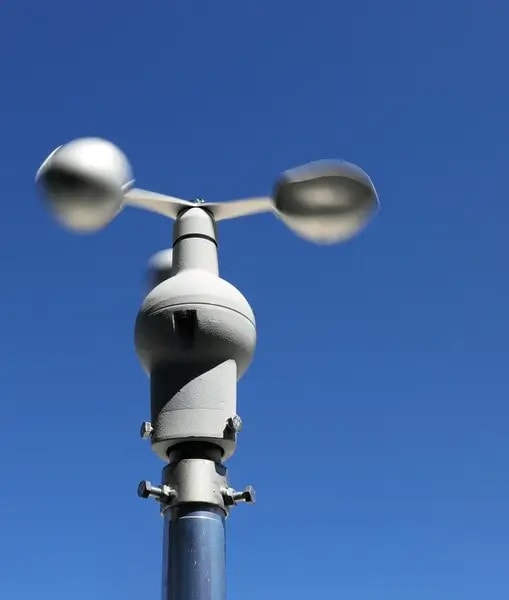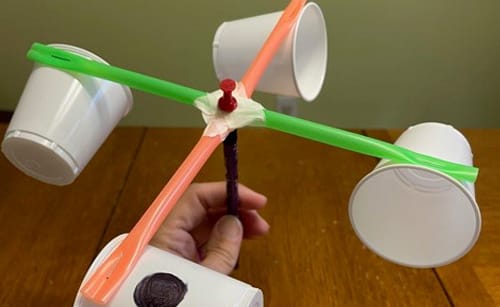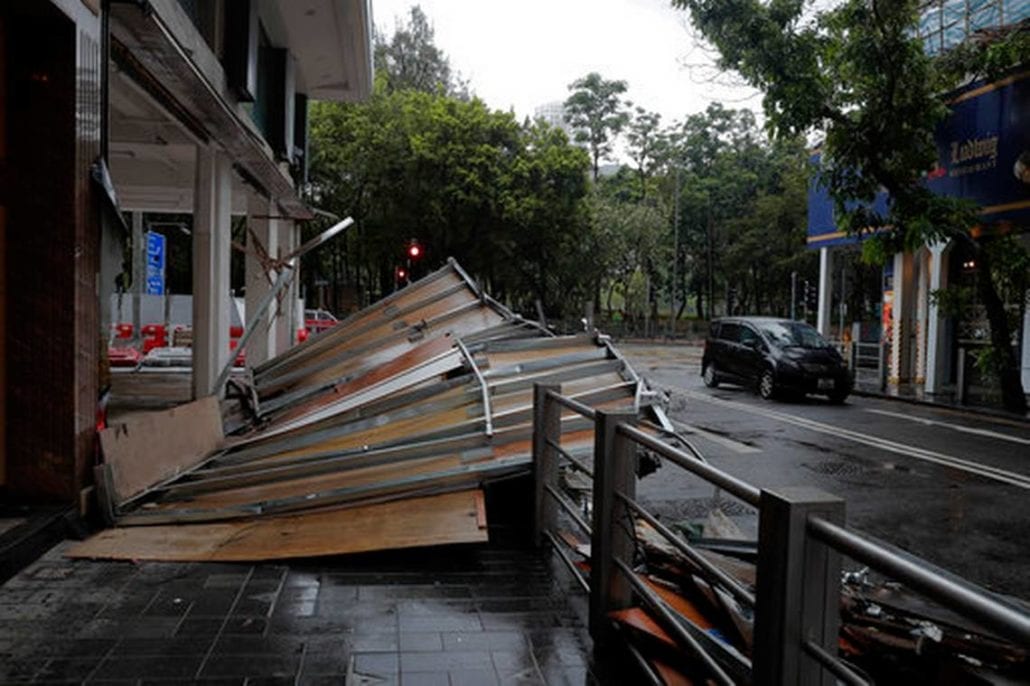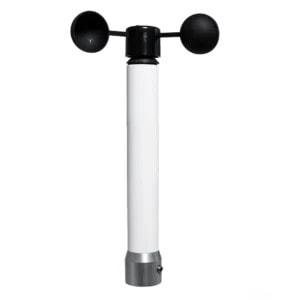
Wind has always shaped how people live, travel, and plan their daily activities, yet understanding it fully depends on accurate measurement. Communities rely on clear information about speed and direction, whether for road safety, fishing along the coast, or farming in changing seasons. Anemometers make this possible by turning invisible motion into numbers we can trust. These devices have grown from simple tools into reliable instruments that support weather forecasting, aviation, and energy. Learning how they work shows why wind is more than a passing breeze, but a force that deserves careful attention.
What Is Wind, Scientifically?
Wind is the natural movement of air across the earth’s surface, and scientists describe it as air shifting from areas of high pressure to areas of low pressure. Although we feel wind every day, its formation follows clear physical principles that can be measured and explained. Understanding these principles allows people to appreciate how invisible forces in the atmosphere connect to weather, climate, and daily life.
What Causes Air Pressure Differences?
The sun heats the Earth unevenly, creating temperature differences between land and water and between different regions. Warmer air becomes lighter and rises, while cooler air becomes heavier and sinks. This process creates areas of high and low pressure. Air naturally moves to balance these differences, and that movement is what we call wind.
Other Forces That Shape Wind
Beyond pressure differences, other factors influence the wind’s path and speed. The rotation of the Earth causes the Coriolis effect, which bends the direction of moving air. Friction from mountains, valleys, forests, and buildings also changes wind flow. Together, these forces explain why wind does not always move in a straight line from high to low pressure but twists, slows, or accelerates depending on the environment.
Types of Wind
Winds, such as local, seasonal, and global winds, are grouped in different ways. Local winds may include sea breezes or mountain winds felt in smaller areas. Seasonal winds like monsoons cover larger regions, while global winds shape weather patterns across continents. Each type connects daily experiences to wider climate systems.
Key Wind Parameters
Wind Speed
Understanding wind speed is central to weather and safety decisions. It measures how fast the air is moving across a certain point. Farmers look at wind speed when spraying crops so chemicals do not drift away, while pilots depend on it to plan safe takeoffs and landings. High wind speeds can damage property, while steady moderate winds may support power generation through turbines. Measuring wind speed gives ordinary people and professionals a way to prepare in advance.
Wind Direction
Wind direction tells us where the wind is coming from. This simple detail has a big influence on everyday life. For instance, fishermen check the direction before heading to the lake, while builders use it to guide the placement of structures that need stability. Even households feel the effect as strong winds blowing from certain directions may carry dust or rain into living spaces. Reliable direction readings help communities manage comfort and safety.
Gusts
Gusts describe sudden increases in wind speed that do not last long. They can surprise highway drivers, create hazards for small boats, and even break tree branches. Although short-lived, gusts are measured because of the damage they may cause. Recording them helps authorities issue alerts during storms and gives builders better knowledge of how structures will respond to quick pressure bursts.
Turbulence
Turbulence refers to irregular or chaotic air movement. It often affects aircraft but also influences how wind flows around buildings, mountains, or forests. Engineers consider turbulence when designing tall towers or bridges, while pilots train to handle its effects. Measuring turbulence improves planning and reduces risks linked to sudden shifts in air movement.
Why These Values Matter
Each wind measurement shows what is happening in the air around us. Knowing these values helps protect lives, guides safe travel, and supports industries that depend on the weather. Accurate readings provide confidence that decisions are based on real and reliable information.
How Anemometers Capture Wind Data
The purpose and function of anemometers are to measure wind in ways that provide both speed and direction. Farmers, engineers, and weather experts depend on this data to make daily decisions about safety, planning, and resource use. Each anemometer type is designed to handle specific conditions, which is why there are several models in use today.
Cup and Vane Anemometers
One of the most common devices uses cups mounted on arms that spin as air flows past. The faster the cups rotate, the higher the wind speed. Paired with a vane, which points in the wind blowing direction, this tool provides simple and reliable readings. It is often used in schools, farms, and weather stations because it is affordable and durable.
Ultrasonic Anemometers
Modern technology has introduced ultrasonic models that work without moving parts. They send sound signals between sensors, and the time it takes for the signal to travel reveals the wind’s speed and direction. These instruments are highly accurate and perform well in tough conditions, making them useful in airports, research stations, and coastal monitoring.
Hot-Wire Anemometers
Another option is the hot-wire design, which measures how quickly a heated wire cools when air moves past it. Temperature changes allow the device to calculate airflow with great precision. While more delicate than cup or vane types, hot-wire models are valuable in laboratories and indoor studies.
Why Placement and Calibration Matter
Even the best tool will not provide helpful data if it is poorly positioned. Placing anemometers away from buildings, trees, and other obstacles allows clean airflow to reach the sensors. Regular calibration also keeps readings accurate over time, helping communities and industries rely on the numbers they receive.
The Importance of Accurate Wind Measurement
Accurate wind measurement has become necessary in many industries because people depend on reliable data to make safety, comfort, and efficiency decisions. Communities and businesses gain confidence when they know the conditions around them are being measured carefully. A farmer planning irrigation, a contractor shaping a high-rise, or an engineer testing a turbine all rely on information from well-calibrated instruments.
Safety Across Critical Operations
Air travel, shipping, and road transportation all carry risks that increase when wind is not properly measured. Pilots preparing to land need clear information on gusts and crosswinds, while captains steering vessels on lakes or oceans must judge the strength of winds against currents. Even construction crews benefit when they know the exact wind speed before lifting heavy materials into the air. Reliable data keeps workers safe and reduces the likelihood of accidents.
Designing Structures to Withstand Pressure
Every bridge, tower, and stadium stands against the unseen force of moving air. Engineers cannot afford to guess how much pressure a structure will face. Wind readings shape the design of roofs, glass walls, and tall masts, helping buildings remain stable under pressure. Accurate measurement gives designers the confidence to create structures that last, while giving communities the comfort of safety.
Boosting Energy Efficiency
Renewable energy projects thrive on accurate wind measurement. Turbines must be positioned where airflow is strongest and most consistent. Careful monitoring reduces wasted energy and improves returns for investors while also supporting communities with cleaner power. Reliable data allows engineers to refine placement, increase efficiency, and stretch the benefits of every turning blade.
Factors That Affect Wind Readings
Accurate wind readings depend on a mix of physical and environmental conditions, as well as the way instruments are maintained. Communities, engineers, and forecasters often rely on these measurements to guide safe decisions, so understanding the factors that influence them helps create reliable data.
Physical Obstructions and Surroundings
Tall buildings, trees, and uneven terrain can interrupt wind flow before it reaches the sensor. These obstacles cause turbulence, which makes the readings less reliable. Positioning an anemometer in an open space, ideally above ground level, reduces interference and allows the equipment to capture a clearer picture of the moving air.
Environmental and Thermal Factors
Wind speed and direction are also shaped by temperature differences across land and water. Heat from roads or rooftops can generate small drafts that affect readings, while sudden weather changes may cause sharp shifts. Even altitude plays a role, since thinner air behaves differently at higher levels. These conditions show how closely weather and environment are linked.
Calibration and Sensor Maintenance
Anemometers need care to work well. Dust, corrosion, or loose parts may alter results if left unchecked. Regular calibration and timely servicing keep the sensors reliable, giving communities confidence in the information provided.
Evolving Measurement Technology
Wind measurement has continued to change as technology grows, bringing more accurate and reliable tools. Earlier devices provided basic readings, but modern instruments now give real-time data that can be shared instantly across digital platforms. Many weather stations use advanced sensors that record speed, direction, and sudden shifts with very fine detail. These upgrades support modern weather forecasting, helping aviation, farming, energy, and disaster management professionals respond quickly to changing conditions. What makes this progress even more practical is the way the equipment can be connected to mobile systems, giving communities access to data without delay.
Conclusion
Strong decisions in weather monitoring start with reliable equipment. At WirelessWind, we provide durable anemometers and wind monitoring systems that deliver accuracy where it matters most. Let us work together to build safer operations, protect communities, and improve planning. Reach out today and let us supply the tools you can trust for dependable wind data.




